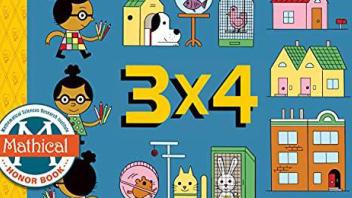
The animals introduced here are not large and famous. Instead they are animals too small, too peculiar, or even too smelly to command much positive attention. But they are fascinating, presented here in lighthearted but accurate image and brief text.
Book lists this appears on
Themed Booklist
Holiday Buying Guide 2018
Other books by this author

The benefits of human actions to help bat survival are introduced in this readable, realistically illustrated and well-sourced introduction. A variety of bats are included with their range identified on clear maps.
A Place for Bats

Full-color illustrations and clear language present a range of fish in different ecosystems in and near the U.S., as well as the impact of people’s activities on the fish. Endpapers include maps where the fish you’ve met in the book can be found.
A Place for Fish

Meet seeds that pop, hop, creep, and explode in this vividly illustrated introduction to the simplest concepts of botany. Learn about the many ways that seeds get from here to there, engaging children’s curiosity with strong action verbs. Clear photographs with fact-packed captions provide supporting details, explaining the role of seed features and functions in creating new generations of plants. Concludes with an illustrated glossary and back matter featuring more resources.
A Seed Is the Start

While children cavort through a sprinkler on a suburban lawn, animals thrive or survive in other habitats (desert, field, wetland, and seaside). The same sun has a different effect in different places on all living creatures presented in a clear text and handsome, realistic, detailed illustrations.
Beneath the Sun

In Manu National Park in Peru, an amazing fourteen different species of monkeys live together. That’s more than in any other rainforest in the world! How can they coexist so well? Find out in this lyrical, rhyming picture book that explores each monkey’s habits, diet, and home, illustrating how this delicate ecosystem and its creatures live together in harmony. From howler monkeys to spider monkeys to night monkeys, young readers will love getting to know these incredible primates and seeing the amazing ways they share their forest.
Fourteen Monkeys

How many people actually know where chocolate comes from? How it’s made? Or that monkeys do their part to help this delicious sweet exist? Kids will learn that chocolate comes from cocoa beans, which grow on cocoa trees in tropical rain forests. But those trees couldn’t survive without the help of a menagerie of rain forest critters: a pollen-sucking midge, an aphid-munching anole lizard, brain-eating coffin fly maggots — they all pitch in to help the cocoa tree survive. Two wise-cracking bookworms appear on every page, adding humor and further commentary, making this book accessible to readers of different ages and reading levels.
No Monkeys, No Chocolate

You know about animals that hibernate, but do you know about animals that sleep all summer? They estivate! Estivation occurs during particularly hot or dry periods such as the West African lungfish in Mali. Straightforward text and realistic illustrations are punctuated by black/white line drawings with notes that create the impression of a field guide. Notes from the author and illustrator as well as additional resources conclude this fascinating volume.
Summertime Sleepers: Animals That Estivate

With the soothing rhythm of a bedtime story and the scientific wonder of a nature documentary, comes a celebration of the moon and all the creatures who rely on its light to find their way home. Under the glow of a shimmering moon, creatures great and small creep out of their dens, using its light to hunt, fend off predators, build their nests or build families. As the moon changes phases these animals adapt their behavior to match its waxing and waning — while human animals look on in wonder.
Thank You, Moon

What can a hole in a tree be? It can be a home, a hideout, or simply a place to read. Textured, stylized illustrations and text that can be read on two levels provide a glimpse at the variety of natural life that make tree holes their homes. Additional information about the tree hole dwellers is included.
Tree Hole Homes: Daytime Dens and Nighttime Nooks

Though a whale dies and sinks to the ocean floor, it creates life that is sustained for another 50 years. Illustrations evoke the deep water while introducing the various creatures that come to feed on the carcass over time. Additional information adds depth to the riveting exploration.
